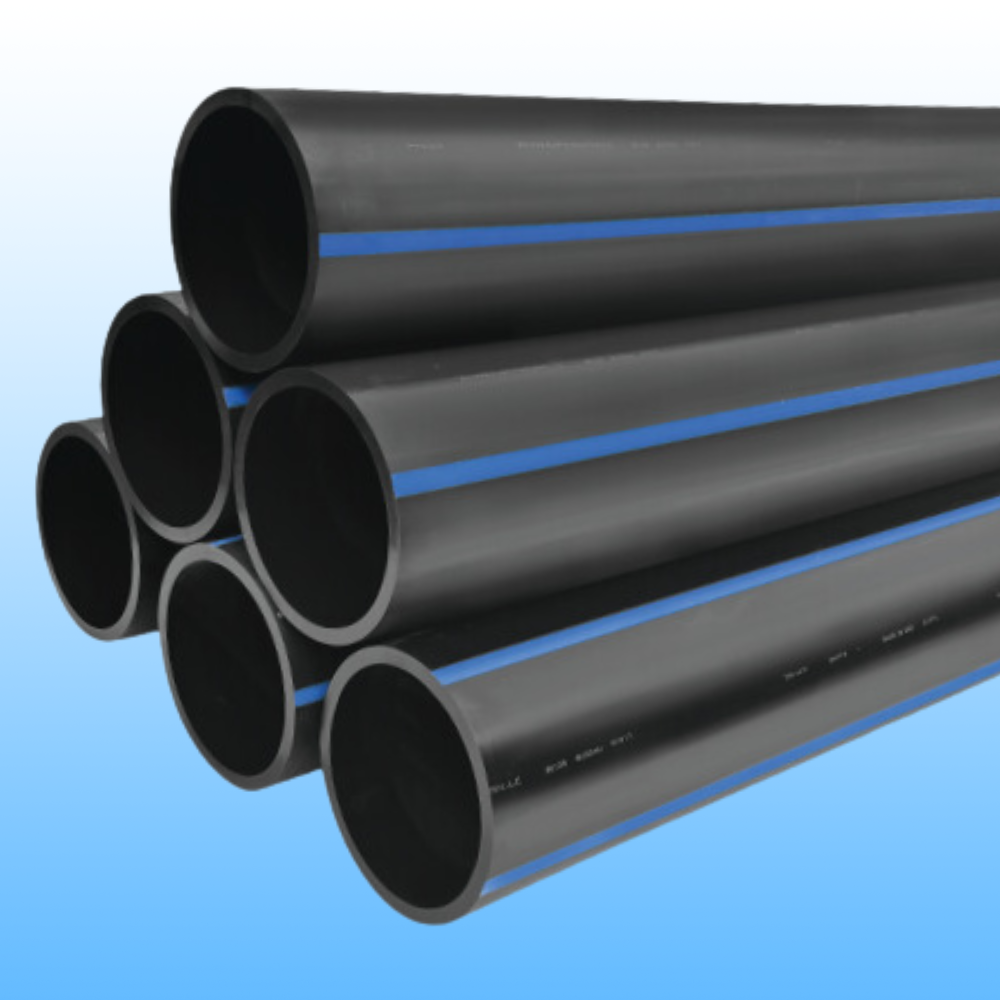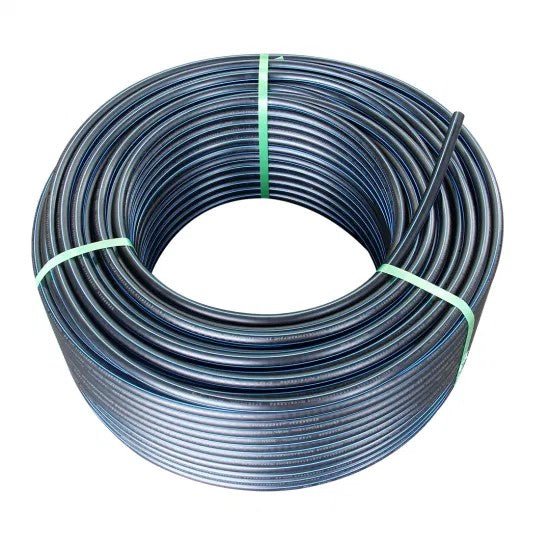Why Pipe Supplier American Plastics Midland Is the Go-To Source for Contractors
Check Out the Production Process Behind High-Quality HDPE Pipe and Its Applications
The production process of top notch HDPE pipelines is elaborate and methodical. It begins with the selection of raw products that improve efficiency. Following this, ethylene undergoes polymerization to form resin, which is then formed through extrusion. Quality control is paramount, guaranteeing that the final item meets stringent criteria. Nevertheless, the trip of HDPE pipelines doesn't end with manufacturing. Their applications throughout various sectors expose a more comprehensive value worth analyzing.
Understanding HDPE: Residences and Advantages

High-density polyethylene (HDPE) is a flexible thermoplastic understood for its toughness and resistance to different environmental factors. This product shows excellent tensile stamina, making it suitable for requiring applications. Its low-density structure adds to a light-weight item, assisting in ease of handling and setup. HDPE likewise showcases exceptional resistance to chemicals, which lessens destruction when subjected to rough materials.
The product's low moisture absorption even more enhances its longevity, making it perfect for usage in pipelines and tank. Additionally, HDPE is immune to ultraviolet (UV) radiation, making sure that items maintain their integrity also when exposed to sunlight. Moreover, its adaptability permits for the production of detailed forms without jeopardizing strength. The environment-friendly nature of HDPE, commonly stemmed from recycled materials, includes to its allure, advertising sustainable methods in production. Overall, these residential or commercial properties and benefits make HDPE a recommended choice for different commercial and consumer applications.
Basic Material Choice for HDPE Production
The choice of raw materials for HDPE production is important to verify the end product fulfills the desired requirements and quality requirements. High-density polyethylene (HDPE) is largely created from polymerized ethylene, obtained from fossil gas such as gas or petroleum. The high quality of these feedstocks substantially affects the mechanical and thermal residential or commercial properties of the last HDPE.
Ingredients also play a substantial function in enhancing HDPE's efficiency, including antioxidants, UV stabilizers, and colorants, which improve toughness and resistance to environmental aspects. The choice process need to think about not just the chemical structure of the raw products yet also their handling attributes to guarantee effective manufacturing.
The sourcing of raw materials must prioritize sustainability and conformity with environmental policies, as accountable techniques are imperative in today's market. Eventually, cautious resources selection lays the structure for creating top quality HDPE pipes suitable for varied applications.
The Extrusion Refine: Shaping HDPE Pipeline
The extrusion process plays an essential role fit HDPE pipes, starting with precise product prep work methods that assure excellent flow and consistency. Similarly crucial is the design of the die, which straight influences the final dimensions and surface area top quality of the pipe. Together, these aspects add substantially to the effectiveness and high quality of HDPE pipe manufacturing.
Material Preparation Techniques
Reliable production of HDPE pipes starts with precise material preparation techniques, particularly the extrusion process. Throughout this phase, high-density polyethylene resin is first dried out to get rid of moisture, making sure suitable circulation features. The material is then fed right into the extruder, where it goes through heating and melting, transforming right into a viscous state. This home heating procedure is meticulously controlled to preserve the product's integrity and efficiency. The liquified HDPE is required with a die, forming it right into a constant pipeline kind. Proper temperature monitoring during extrusion is important, as it directly affects the product's buildings and the last item high quality. Once shaped, the HDPE pipe is cooled down and reduced to defined lengths, all set for subsequent handling and applications.
Die Design Relevance
Accuracy in die design plays a necessary role in the extrusion process of HDPE pipelines. The die works as the final shaping tool, directly affecting the pipe's measurements, wall surface thickness, and surface coating. A well-designed die warranties uniform product circulation, decreasing issues such as irregularities and weak points. The geometry of the die should be optimized to accommodate the particular buildings of HDPE, including its thickness and thermal actions during extrusion. Additionally, the cooling rate of the product as it travels through the die can considerably affect the pipe's architectural stability. Spending in innovative die technology is vital for producers aiming to generate premium HDPE pipelines that satisfy market standards and customer expectations.
Quality Control Steps in HDPE Manufacturing
Although different aspects influence the high quality of HDPE pipeline production, effective quality assurance procedures are important to assure consistency and dependability in the end product. Secret quality assurance techniques consist of rigorous material inspection, verifying that the raw polyethylene fulfills well established criteria for purity and density. During the extrusion process, specifications such as temperature, pressure, and cooling time are very closely kept track of to maintain dimensional precision and architectural honesty
In addition, post-production testing is important; producers commonly carry out hydrostatic tests to assess the pipe's stamina and resistance to stress. Aesthetic examinations for surface area issues even more improve quality control. Certification from relevant criteria companies, like ASTM or ISO, provides an added layer of reputation. By carrying out these comprehensive quality assurance actions, manufacturers can reduce issues, boost efficiency, and make certain that the HDPE pipelines satisfy the particular requirements of numerous applications, eventually leading to client contentment and rely on the product.
Applications of HDPE Pipe Across Industries
HDPE pipelines are made use of across various markets as a result of their sturdiness and flexibility. In water circulation systems, they ensure reliable distribution, while in wastewater administration, they supply dependable solutions for waste transport. Furthermore, farming watering networks gain from HDPE's resistance to deterioration and adaptability, making it a perfect selection for modern farming techniques.

Water Distribution Systems
A substantial number of sectors depend on high-density polyethylene (HDPE) pipes for reliable water circulation systems. Recognized for their toughness and resistance to deterioration, HDPE pipes are widely used in community supply of water networks, farming watering, and industrial applications. Their light-weight nature facilitates very easy handling and installation, minimizing labor expenses and time. Additionally, HDPE pipes can suit numerous pressure degrees, making them ideal for both low and high-pressure systems. Pipe Supplier American Plastics Midland. The adaptability of the material permits seamless combination into existing facilities, reducing the need for extensive excavation. In addition, HDPE's resistance to chemical seeping warranties that the water provided continues to be safe and tidy, making it an optimal option for keeping the top quality of potable water across different markets
Wastewater Management Solutions
Effective water circulation systems likewise lead the way for cutting-edge wastewater management remedies, where high-density polyethylene (HDPE) pipes play a considerable duty. Renowned for their resilience and resistance to rust, HDPE pipes are optimal for delivering wastewater in numerous settings. Their adaptability permits easy setup in intricate environments, decreasing the requirement for substantial excavation. Additionally, HDPE's smooth interior surface reduces rubbing, boosting flow prices and effectiveness. These pipes are likewise immune to chemical leaching, guaranteeing that impurities do not compromise the surrounding environment. Industries, communities, and treatment centers increasingly rely upon HDPE pipes for their integrity and long life, making them a recommended option for modern wastewater administration systems. This hdpe gas pipe flexibility underscores the critical importance of HDPE pipes throughout countless applications.
Agricultural Watering Networks
Agricultural irrigation networks benefit greatly from the use of high-density polyethylene (HDPE) pipelines, which provide reliable and reliable water shipment to crops. HDPE pipelines are lightweight, making them very easy to transport and set up, while their flexibility allows for numerous setups in diverse surfaces. These pipelines demonstrate exceptional resistance to deterioration, chemicals, and UV radiation, ensuring toughness in severe agricultural atmospheres. Furthermore, their smooth indoor surface area decreases rubbing loss, maximizing water flow and minimizing power costs connected with pumping. The durability of HDPE pipelines, often surpassing half a century, adds to decrease maintenance and replacement expenses. Subsequently, farmers significantly depend on HDPE pipes to boost watering efficiency and promote sustainable farming practices, ultimately resulting in enhanced crop returns and resource conservation.
Future Fads in HDPE Pipe Innovation
As the demand for sustainable and efficient facilities grows, advancements in HDPE pipe modern technology are positioned to change different industries. Arising fads include the assimilation of smart innovations, such as sensors and IoT abilities, which assist in real-time surveillance of pipeline conditions, reducing maintenance prices and protecting against leakages. In addition, the development of advanced production methods, see this page such as 3D printing, is making it possible for the production of facility, tailored pipeline layouts that deal with particular project needs.
The focus on recycling and circular economic climate practices is driving the development of HDPE pipes made from recycled materials, boosting sustainability. Enhanced jointing techniques, such as electro-fusion and mechanical installations, are also improving installation efficiency and dependability. The growing focus on environmental guidelines is pushing producers to adopt greener manufacturing procedures, guaranteeing that HDPE pipes not just satisfy sector criteria but also promote an even more sustainable future for infrastructure advancement.
Regularly Asked Concerns
How Does HDPE Contrast to Various Other Plastic Products?
HDPE surpasses many various other plastic materials relating to durability, chemical resistance, and versatility. Its low density and high tensile toughness make it perfect for numerous applications, often exceeding options in both efficiency and longevity.
What Are the Ecological Effects of HDPE Production?
The ecological impacts of HDPE production include greenhouse gas discharges, power usage, and possible pollution from producing processes. Furthermore, improper disposal can bring about dirt and water contamination, increasing worries concerning lasting environmental results.
Can HDPE Pipeline Be Reused?
Yes, HDPE pipelines can be recycled. Lots of facilities approve utilized HDPE for processing, changing it right into brand-new items. This recycling adds to sustainability efforts, reducing plastic waste while saving resources and energy in the production cycle.
What Is the Life Expectancy of HDPE Piping?

Just How Do Temperature Level Variants Affect HDPE Pipe Efficiency?
Temperature level variations considerably influence HDPE pipeline efficiency, impacting adaptability and toughness. High temperature levels can result in softening, while reduced temperature levels might create brittleness, eventually influencing the pipeline's toughness and suitability for different applications in diverse environments.